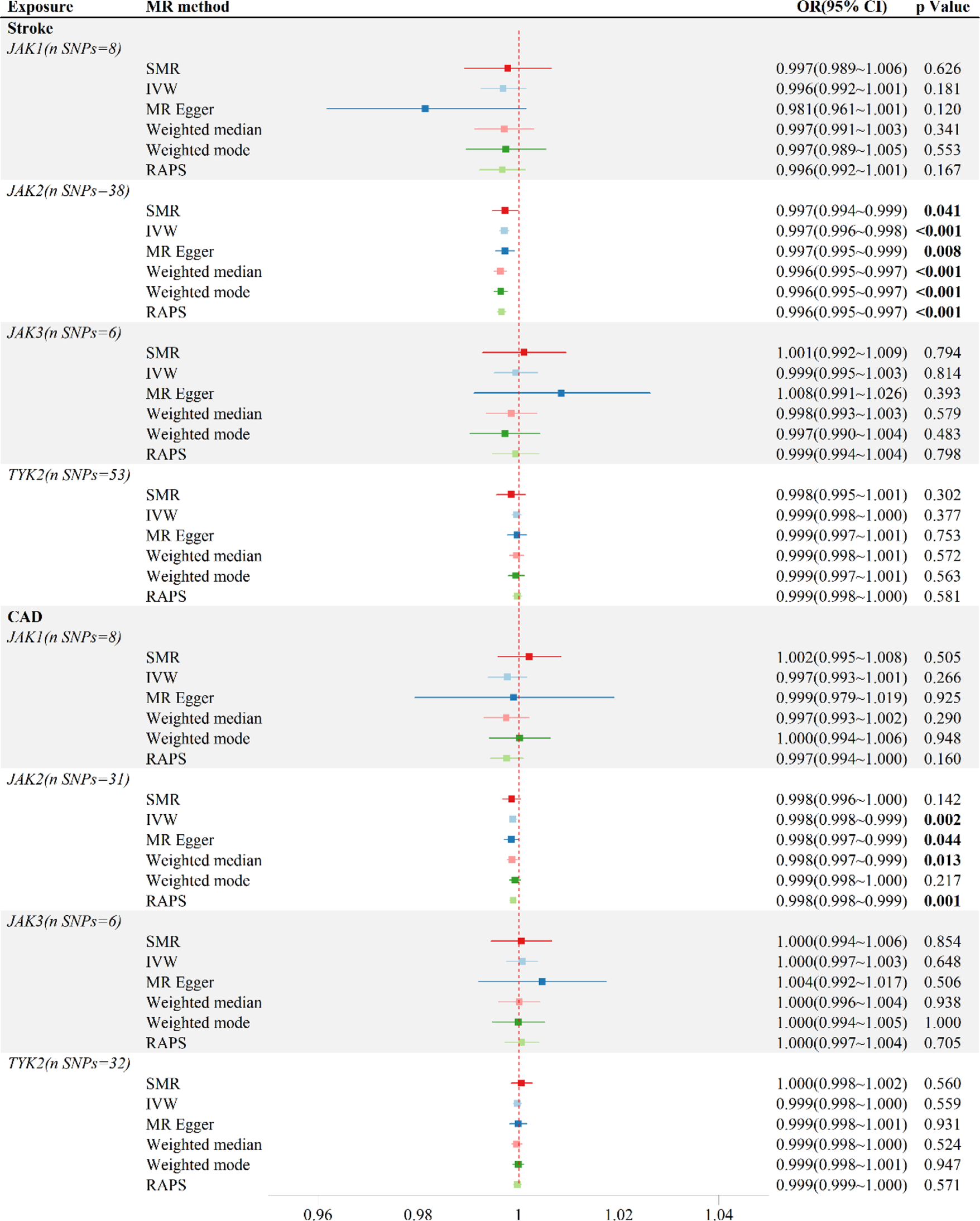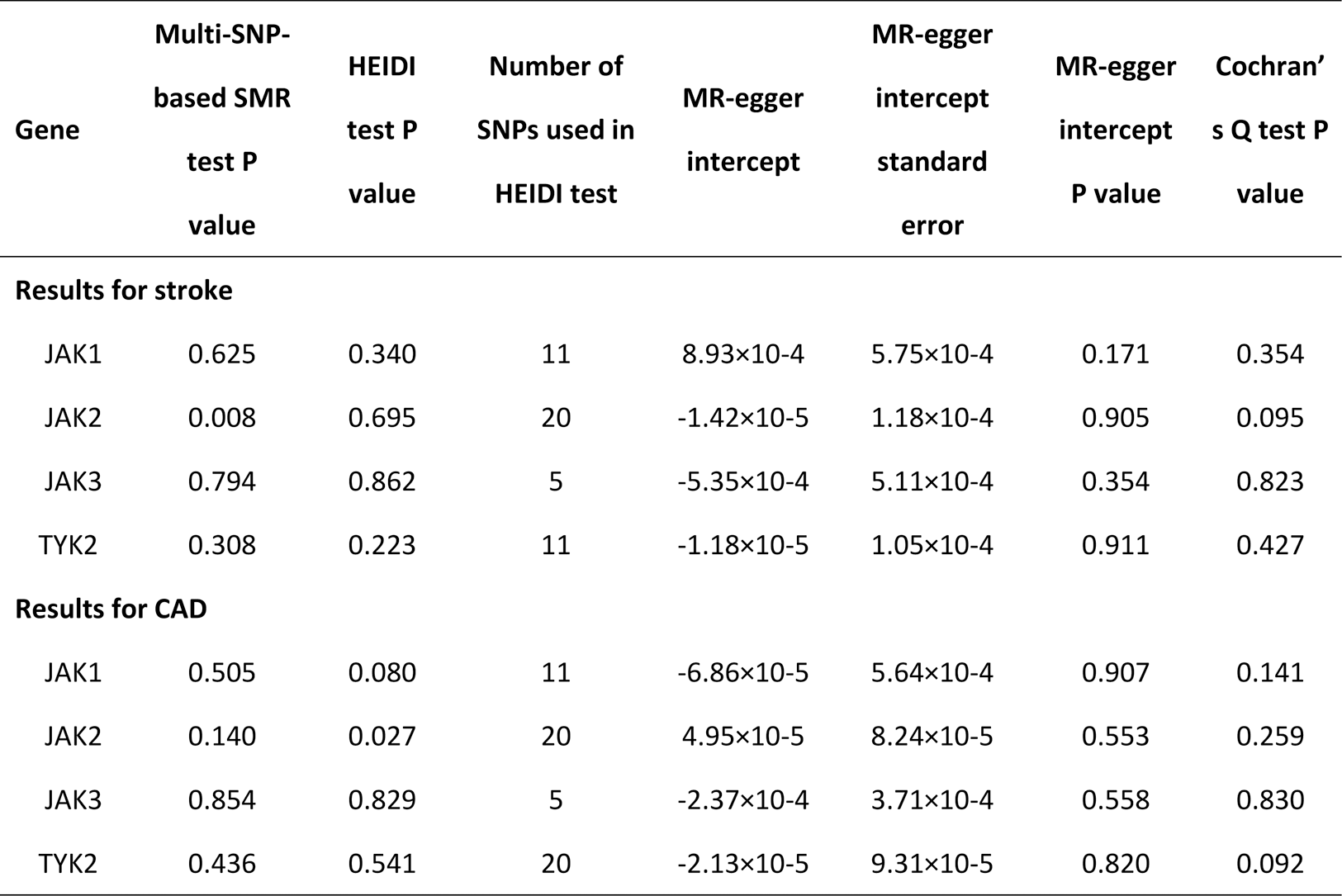

Background: The use of tofacitinib, a Janus kinase inhibitor (JAKi) targeting JAK1 and JAK3, was associated with increased cardiovascular risks in the Oral Rheumatoid Arthritis Trial surveillance but not in several observational studies or meta-analysis research. Thus, it was still unclear if all JAKi lead to high cardiovascular risks. A different method to investigate the effect of JAKi on cardiovascular disease (CVD) is needed as it could provide additional and robust evidence.
Objectives: Two-sample drug target cis-MR analysis was used to test if JAKi targets proxied with cis-expression quantitative trait loci (eQTLs) was causally associated with CVD, including stroke and coronary artery disease (CAD).
Methods: Instrument variables proxy JAKi targets exposure was identified from cis-expression quantitative trait loci (cis-eQTLs) within or near JAK1, JAK2, JAK3, and TYK2 inferred from the 31,684 blood samples-based gene expression data in the eQTLGen Consortium. Genome-wide association studies for stroke and CAD from 461,880 and 463,010 UK Biobank participants were used. SMR and IVW were the primary two-sample MR methods for causal association testing. The robustness and sensitivity of primary analysis findings were assessed using MR-Egger, weighted median, weighted mode, and robust adjusted profile score models.
Results: A total of 8, 38, 6 and 53 SNPs within or near JAK1, JAK2, JAK3, and TYK2 were selected for stroke and 8, 31, 6, and 32 SNPs for CAD, respectively. A high expression level of JAK2 inhibitor target was associated with a decreased stroke risk in SMR (OR = 0.997, 95% CI 0.994-0.999, P = 0.041) and IVW (OR = 0.997, 95% CI 0.996-0.998, P < 0.001). Similar results were confirmed in the analyses with the other MR methods. A high expression level of JAK2 inhibitor target was significantly associated with a low CAD risk (OR = 0.998, 95% CI 0.998-0.999, P = 0.001) in the IVW but not SMR analysis. There was no association of the targets of JAK1, JAK3, or TYK2 inhibitors with stroke or CAD risk (Figure 1). The significant associations derived from IVW were not driven by individual SNPs. There was no significant horizontal pleiotropy for the association (Table 1).
Conclusion: This study demonstrated a genetic causal association between JAK2 expression levels inhibition and the increased risk of stroke and probably CAD, supporting the need to issue a warning about the increased risk of cardiovascular events associated with JAKi particularly when using JAK2 inhibitor-related medications in clinical practice.
Funding: This work was supported by the National Natural Science Foundation of China (82171780, 81971527 and 82101892), Guangzhou Municipal Science and Technology Project (202102010188 and 2023A03J0709), Basic and Applied Basic Research Foundation of Guangdong province (2022A1515010524, 2020A1515110061 and 2019A1515011928), and the Fundamental Research Funds for the Central Universities, Sun Yat-Sen University (22qntd3303).
REFERENCES: NIL.
Forest plot of MR estimates of genetic risk of JAK expression levels in blood on stroke and CAD

Table 1. Information about sensitivity analysis of Mendelian randomization

Acknowledgements: We thank all subjects and medical staff who generously contributed to this study.
Disclosure of Interests: None declared.